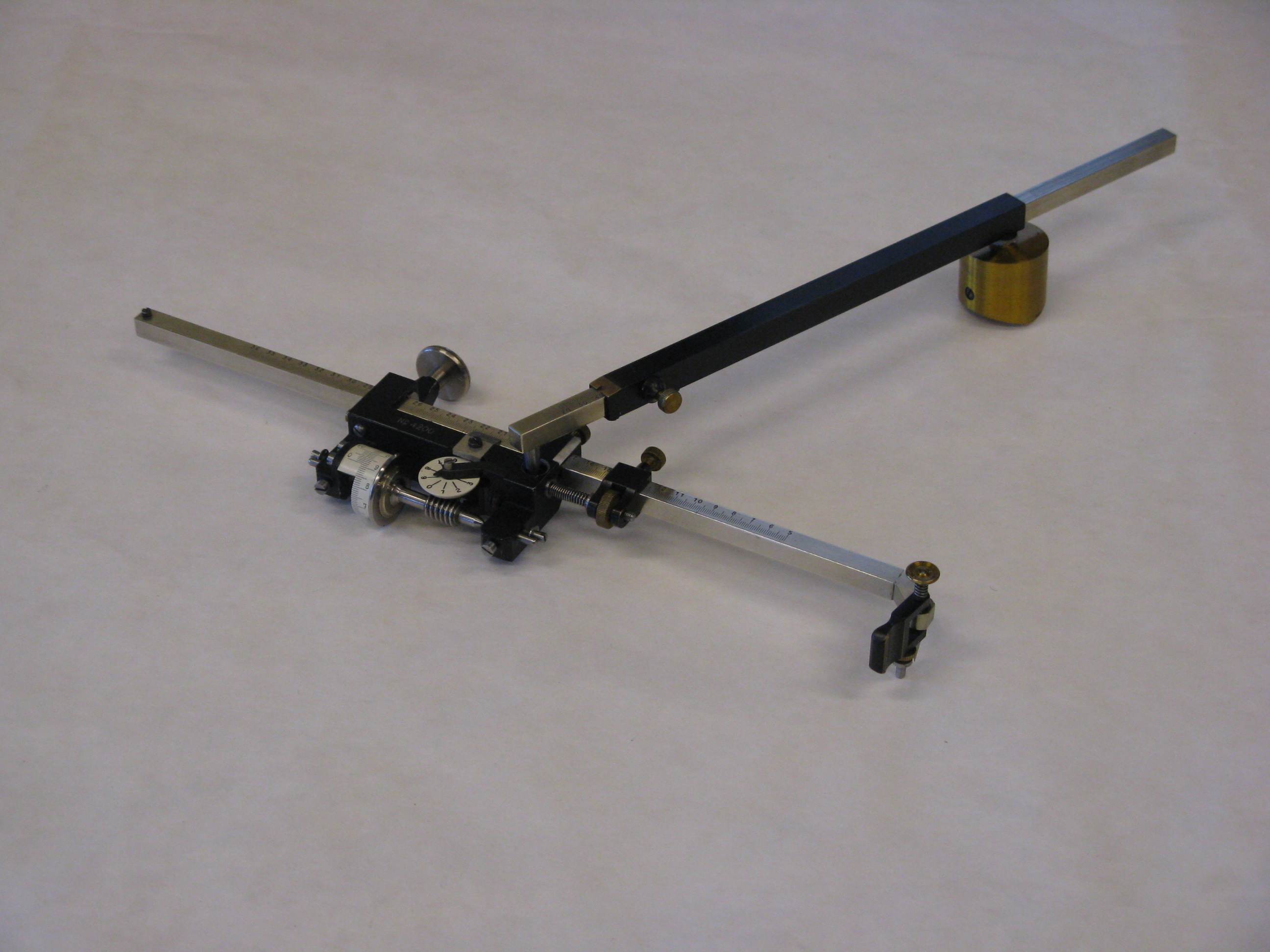I recently got one of these for my birthday:
http://www.math.ucsd.edu/~jeggers/Planimeter/KE_4242_1930/KE_4242_1930_gallery.html
It´s called a planimeter - a simple device which is used to calculate the area of an arbitrary blob. What is incredible is how simple the device is. At it's most basic, it is nothing more than two joined sticks and small wheel. It works because of Green's theorem, which is basically just the fundamental theorem of calculus (see post below). The fundamental theorem of calculus is everywhere. Mathematical!
The one I have is exactly like the one in the gallery above. It´s a 1930´s German manufactured planimeter. How did I come across this? About half a year ago, I was wandering in the beautiful stacks of the Math library at the University of Illinois. It might be one of the more interesting libraries around. The library is modeled on the throne room at Neushwarstein Castle of King Ludwig II of Bavaria, has dangerous translucent glass floors, and pictures of famous mathematicians whose gaze is at times very unnerving. The book collection isn't bad either. Although it is though a very small library by the university´s standards, they have a pile of books every month that they give away.
These days, the books are usually on some obscure branch of analysis and almost always in Cyrillic. I happened to find a book on the subject of Graphical and Mechanical Computation however. This book was of practical use at the time of its publication, but the direction of our progress has made the techniques nothing more than curiosities. It's such a shame that progress has caused us to abandon such a beautiful technology. Fortunately, Google has preserved the book at the link above. I learned about the planimeter in some of the later chapters.
Maybe there is new interest in the subject. John D Cook recently reviewed this book on Nomology, a form of graphical numerical computation. I guess I have now another book to add to my shelf now...

